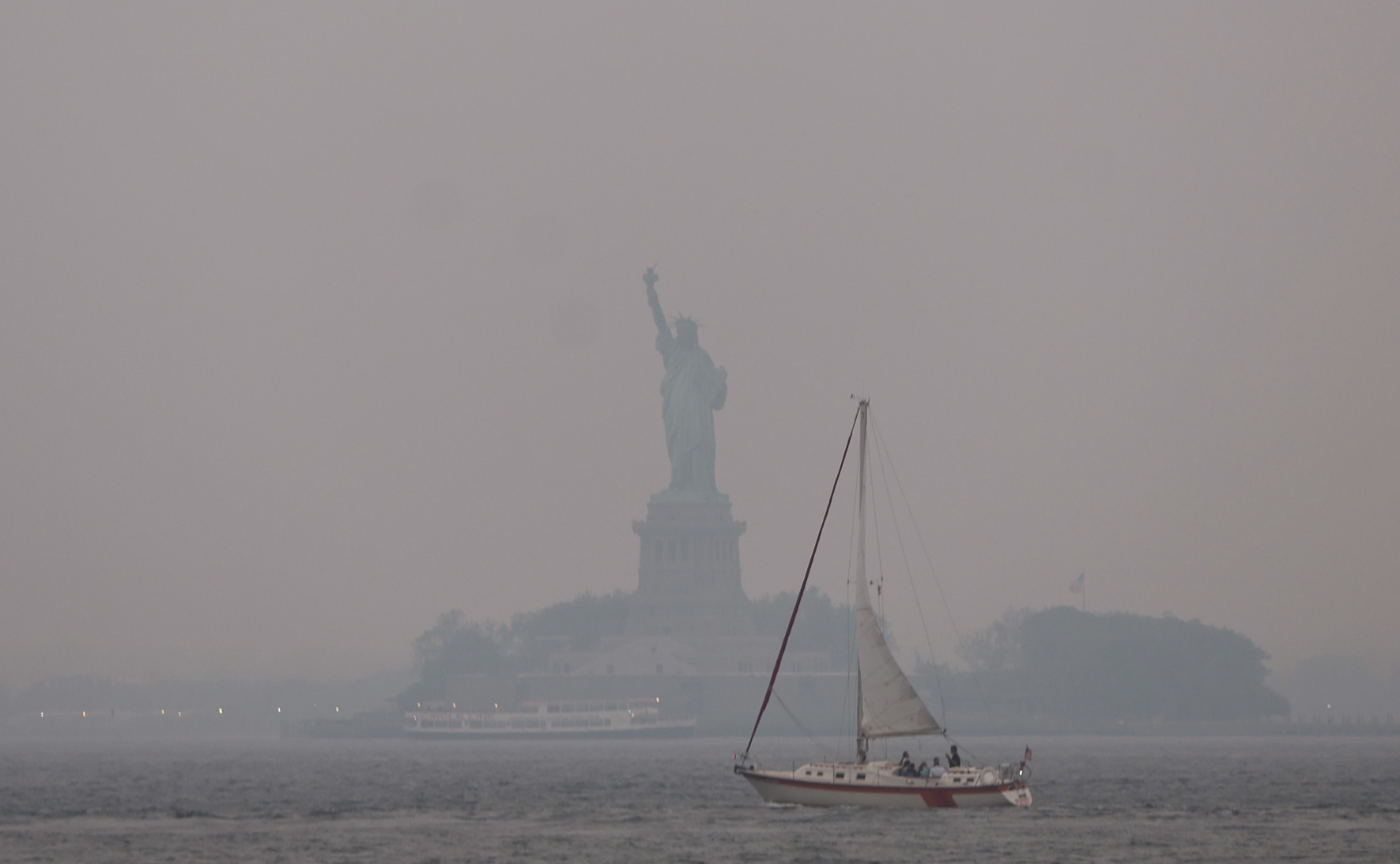An eerie haze has engulfed much of the U.S., canceling outdoor activities and even grounding flights as smoke from Canadian wildfires drifts south. And now, officials are calling on residents to take precautionary measures to protect their health.
Around 123 million Americans across the Northeast, Midwest, and mid-Atlantic are under air quality alerts. Some places are being affected more than others: Pollution from our Northern neighbor’s fires is especially bad in major cities, with New York City topping the world’s worst air quality rankings on Wednesday. Meanwhile, residents in Philadelphia, Baltimore, and Washington, D.C. are all under code red warnings, meaning it’s unhealthy to go outside.
This concerning news comes as uncontrollable flames continue to ravage several Canadian provinces, including Alberta, British Columbia, and Nova Scotia. It has gotten so bad that Quebec asked for international support to help its firefighters and teams on the ground.
But there may be some reprieve on the horizon: Officials said they hope precipitation forecasted for later in the week will help bring down the fires. In the meantime, here’s what you should know about the crisis and how you can protect yourself — plus, Katie’s comprehensive chat with Dr. Dan Sterman, the head of pulmonary medicine at NYU Langone Health.
What’s happening with the Canada wildfires?
Canada’s currently in the midst of an especially brutal wildfire season, as extreme weather worsens in large part due to climate change. So far, there have been 2,214 wildfires across Canada and more than 400 active flames — half of which are considered out of control. More than 8.7 million acres have been burned, which is larger than the state of Vermont. In response, officials have since expanded evacuation orders for residents to leave their homes.
Luckily, help is on the way: More than 950 volunteers have arrived from the U.S., Australia, New Zealand, and South Africa, according to Canadian Interagency Forest Fire Centre spokesperson Jennifer Kamau. President Biden has also sent equipment and more than 600 firefighters, according to the AP.
“This is a scary time for a lot of people, not just in Alberta, but right across the country, including in the Atlantic, the North, and Québec, too,” Prime Minister Justin Trudeau said at a news conference on Monday.
How’s the U.S. air quality being impacted by the smoke?
The Federal Aviation Administration was forced to slow or halt some flights into New York City at LaGuardia International Airport and Newark Liberty International Airport as a thick smoke clouded the skies. Schools across the East Coast also had to cancel sports practices and recesses to protect students amid air quality health advisories.
Other parts of the country are being affected, too. Midwestern states were under threat from wildfire smoke, and there were air quality warnings in states like Minnesota, Wisconsin, and Indiana. The haze has also traveled as far south as the Carolinas, where residents are being advised to stay indoors.
But just how bad is wildfire smoke for our health? The weather forecasting company AccuWeather estimates that breathing polluted air in the worst impacted areas of the Northeast for a few hours is equivalent to smoking five to ten cigarettes. That’s because wildfire smoke contains a “complex mixture” of pollutants that can cause everything from headaches and fatigue to even a weakened immune system. For those with preexisting cardiovascular problems, poor air quality can lead to heart attacks or strokes, even if you’re only exposed for a short amount of time.
How can you protect yourself from poor air quality?
Keep an eye on air quality data for your area (which you can check right here). Most agencies use color-coded systems to show how bad the air is in a certain place at a given time, with green typically being the best, and red being the worst.
Secondly, stay indoors if it’s especially polluted outside, and keep all of your windows shut. If you have an air conditioner instead of central air, Dr. David Hill told CBS that he recommends running the air conditioning on a recirculation setting to prevent any outside air from coming in. He also recommended recirculating the air inside your car if you need to drive anywhere.
You might want to also limit your own indoor pollution. According to the government-run air quality site AirNow, that means avoiding burning candles, frying foods, vacuuming, and using aerosol sprays. If you’re still worried about the air quality inside your home, then a portable air cleaner can help, but “make sure it is sized for the room and that it does not make ozone.”
Should you be wearing a mask until the air quality improves?
The short answer is yes. If you have to go outside and you’re in a vulnerable area, then you’re going to want to mask up like you did during the coronavirus pandemic. N95 masks are the best option, but surgical masks work, too. But if you are all out of masks, you can improvise by putting a scarf over your nose and mouth to prevent dangerous smoke particles from going into your lungs. That said, this is not the week to work on your marathon training or finally get around to mowing the lawn.
“Take it easier during smoky times to reduce how much smoke you inhale. If it looks or smells smoky outside, avoid strenuous activities such as mowing the lawn or going for a run,” AirNow’s guide reads.









